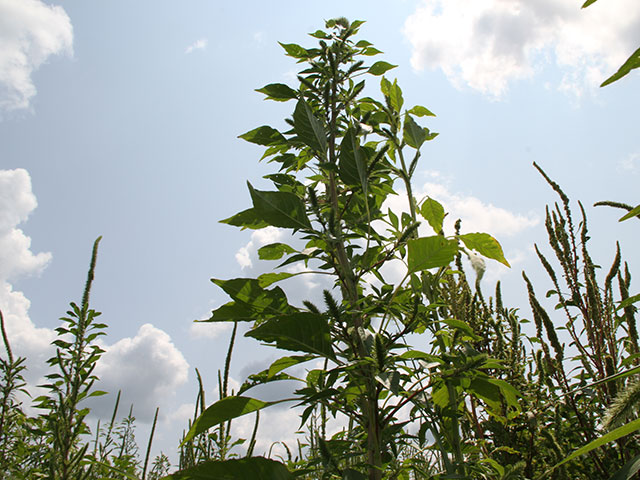Herbicide Resistance Is Here to Stay, but It Can Be Managed - DTN The Progressive Farmer

Many farmers, Steckel said, are finding that lower rates of many herbicides are no longer effective.
For waterhemp at a test site in Montgomery County, Tennessee, Steckel said 22 ounces of Bayer's XtendiMax herbicide, a dicamba product, controlled less than 40% of the weeds. However, applications of 44 ounces per acre and 88 ounces per acre controlled nearly 70% and 90% of waterhemp, respectively. According to the XtendiMax label, 88 ounces per acre is the maximum total rate for both pre-emergence and postemergence applications.
"Farmers are going out with considerable rates trying to knock pigweeds down," Steckel continued. "You have to use up to 88 ounces (per acre) and apply timely to get the level of control that a pint provided a few years ago. That's where we are right now trying to manage weeds."
He added, "We're going to have to do things that can't pour out of the jug. We need to use cover crops and just yank weeds out of the field."
A recent bright spot is some cotton growers found that Zidua herbicide applied with fertilizer to cotton in the V6 to V10 stage provided good pigweed and grass control.
Finding creative, new ways to use residual herbicides is more important than ever to battle herbicide-resistant weeds, according to Todd Baughman, a weed scientist at Oklahoma State University.
He said Steckel's assessment that herbicide resistance will continue to be a big problem almost made him sick to his stomach. Crop rotation is no longer an effective weed management practice as it was in the past, Baughman said. Residual herbicides and layering them need to be an important part of any weed control program.
Baughman said keeping fields weed-free during the first four to six weeks of the growing season is crucial. Weed pressure during that time can reduce yields by 1% per day, he continued.
"That's why residuals are so important upfront. Start clean and stay clean," Baughman said.
The weed specialist suggests an integrated weed management approach with a focus on residuals. Baughman has seen benefits of using a pre-emergence program that includes a PPO inhibitor, ALS inhibitor and metribuzin. He said even if areas have weeds resistant to PPO and ALS herbicides or the efficacy doesn't last as long as in the past, there's still residual benefits when you combine the products together.
"We have a lot of growers using at least a two- to three-way combination (of residuals) and seen success," Baughman said. "Some farmers may have backed off on that with Xtend and Enlist technologies, but farmers need to get back to that. They will Increase the window of post applications and protect against extreme weather situations."
He added that layering residuals can help keep weeds at bay long enough to apply postemergence herbicides effectively. Also, postemergence tank mixes that include residuals such as Zidua, Dual or Warrant -- all Group 15 herbicides -- can be an affective weed-control strategy, Baughman said.
"Always have a residual out there before the next flush of weeds. That's something we need to think about again to keep weed seed production (down) that will help future generations," Baughman continued. "It's better to have a residual and not need it than to not have it and need it."
-- For more on the battle against herbicide-resistant weeds, read "Dicamba-Resistant Waterhemp" by DTN Staff Reporter Emily Unglesbee here: https://www.dtnpf.com/…
Matthew Wilde can be reached at matt.wilde@dtn.com
Follow him on Twitter @progressivwilde
Comments
Post a Comment